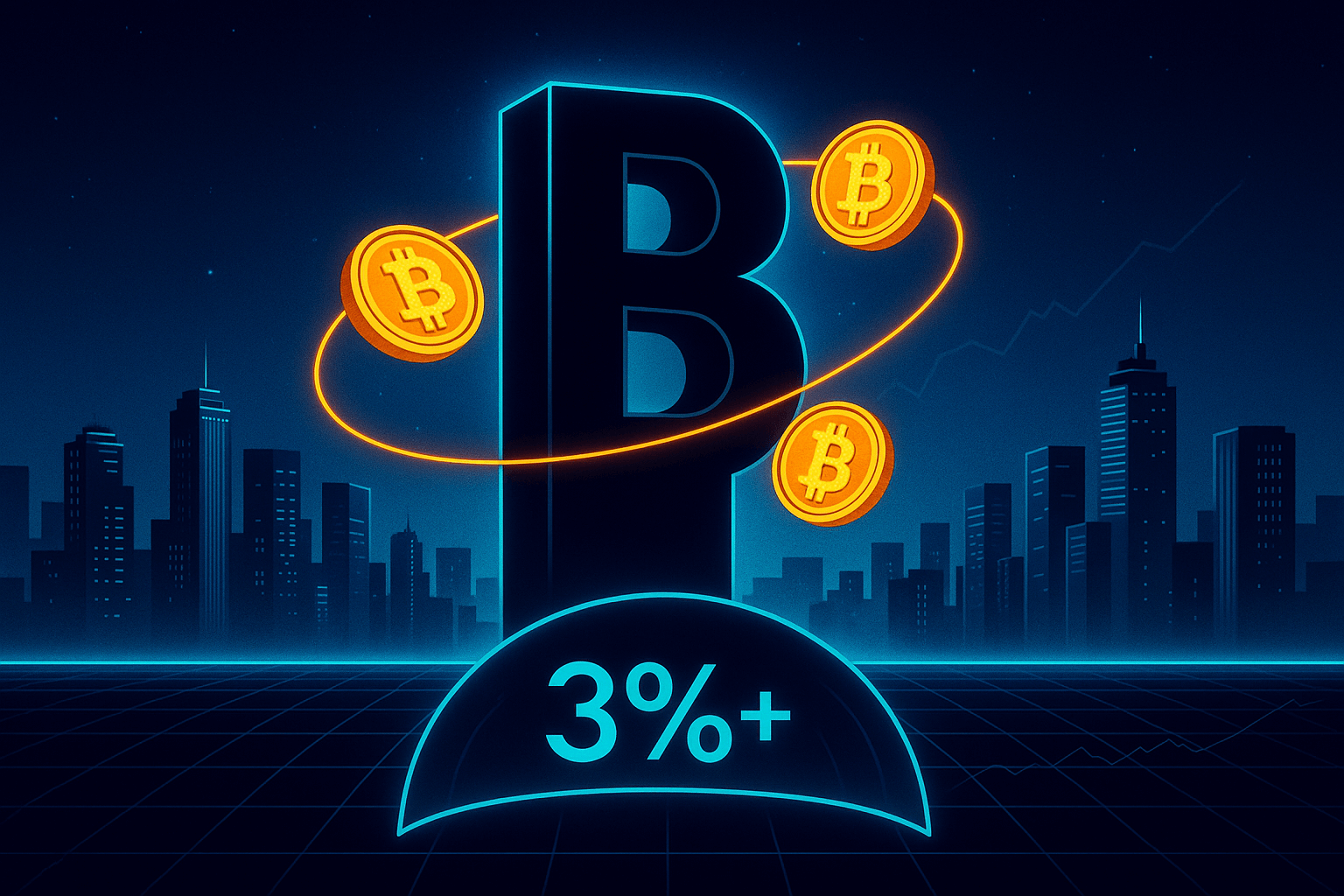Ethereum Proposes a Unified Fee to Simplify Transactions — What It Means for Users, Wallets and Rollups
August 5, 2025
<title>Ethereum Eyes a Unified Fee to Simplify Transactions Across L1 and L2 | Paypilot Market Pulse</title>
<meta name=”description” content=”Ethereum researchers propose a unified fee so users see one price for transactions across L1 and rollups. Here’s what changes, why it matters, and how traders can prepare.”>
<meta name=”keywords” content=”Ethereum unified fee, L2 fees, rollups, blob fees, gas pricing, wallet UX, ETH transactions, EVM scalability, Paypilot OTC, crypto wallet, crypto card”>
<h1></h1>
<p><em>Published July 2025 — Paypilot Market Pulse</em></p>
<p>
Ethereum researchers have floated a design change with a simple promise and a complex engineering backstory: show users a single fee for Ethereum transactions, regardless of whether the action settles on mainnet or a rollup. In today’s post-4844 world, fees are split between Layer-1 execution gas, data-availability costs and Layer-2 execution, each with its own congestion and pricing rules. The proposed approach bundles those moving parts into one all-in number paid by the user, while letting the protocol and rollups handle the accounting behind the scenes. The aim is cleaner UX, fewer failed sends and a more predictable experience as Ethereum scales.
</p>
<h2>What “Unified Fee” Actually Means</h2>
<p>
Under the current model, a single transaction can touch multiple fee lanes. A swap on an L2 might include the L2’s execution fee, plus a share of L1 data costs when the rollup posts its proof or blob. Wallets do their best to estimate the total, but volatility across layers often produces under- or over-payment and confusing refund behavior. A unified fee collapses those components into one price the user agrees to up front. Internally, the system earmarks portions for L2 execution and for L1 data posting so the transaction still respects on-chain economics, just without exposing every lever to the end user.
</p>
<h2>Why Ethereum Wants This Now</h2>
<p>
Scaling worked: rollups are busy and blobs made data cheaper. Ironically, success also increased cognitive load. New users don’t care whether a fee spike came from L1 blobs or L2 gas—they just want to know “what it costs.” A unified fee targets three pain points: first, fewer failed transactions because estimates drifted while a user was signing; second, simpler wallet screens and fewer edge cases for refunds; third, easier mental accounting for teams paying at scale (market makers, games, commerce apps) who need stable per-action costs.
</p>
<h2>How It Could Be Implemented (High-Level)</h2>
<p>
Designs vary, but most sketches share a flow like this. The wallet requests a quote for an action from the rollup or a fee router. That quote already includes expected L1 data costs, plus a safety buffer. The user signs a single-amount payment. Behind the scenes, the rollup or a coordinator allocates the fee to its L2 sequencer and reserves the L1 share for blob or calldata posting. If the final L1 cost comes in lower, the difference returns to the payer or to a fee pool per the rollup’s policy. If higher, the buffer absorbs the gap; if that buffer is exceeded, the transaction is rejected before execution rather than failing mid-flight.
</p>
<h2>What Changes for Users</h2>
<p>
The core promise: one number on the screen. Wallets could show a total price and a simple “speed” selector instead of granular “max base fee,” “priority fee,” and “L1 data” fields. Expect fewer “stuck” transactions, fewer tiny dust refunds and less guesswork around when to send. For power users, advanced views could still expose the breakdown, but it becomes optional rather than mandatory.
</p>
<h2>Implications for Wallets and dApps</h2>
<p>
Wallets get to simplify fee estimation logic and lean on standardized quoting. That reduces support tickets and odd states where a transaction executes on L2 but the L1 posting lags. dApps can price actions in a way that looks and feels like a web checkout: approve the total, perform the action, done. Subscription-style experiences become more realistic because recurring actions can be quoted and authorized against a target budget without confronting users with fee micro-mechanics every time.
</p>
<h2>Rollups, Sequencers and Economics</h2>
<p>
A unified fee doesn’t erase the fact that rollups must still pay L1 to prove or publish data. It changes when and how they collect. Rollups would likely expose a standard quote API that blends their execution price with an estimate of near-term L1 data costs. Sequencers gain more predictable revenue because users pre-commit to the total. The trade-off is risk management: rollups may need buffers or insurance-like pools to handle sudden L1 fee spikes between quote and posting. Competition among rollups could shift from “who is cheapest right now” to “who offers the most reliable all-in quotes with the fewest rejections.”
</p>
<h2>Open Questions the Community Will Debate</h2>
<p>
Several details will draw scrutiny. Who ultimately bears the tail risk when L1 fees gap higher after a quote—users, sequencers, or a shared buffer? How are refunds handled consistently across rollups so wallets don’t re-introduce complexity? What safeguards prevent MEV-style manipulation of quotes, especially during volatile periods? And how can the system preserve transparency so researchers and auditors can still attribute costs correctly even if the end user sees a single price?
</p>
<h2>Benefits and Trade-Offs</h2>
<p>
The benefits are clear: better UX, fewer failed transactions and a smoother path for mainstream adoption. Developers would write less fee glue code and more application logic. On the other hand, the abstraction may hide signals power users rely on, such as when L1 data markets are tight. It could also concentrate some pricing power in the quoting layer if standards aren’t open and auditable. The likely compromise is optional transparency: a simple default with the ability to drill down.
</p>
<h2>What It Means for Traders and Businesses</h2>
<p>
For active users, a unified fee reduces friction when moving across chains and rollups during fast markets. For businesses, it simplifies cost forecasting and reduces reconciliation headaches across thousands of small on-chain actions. Payment and commerce flows benefit most: quoting a stable, all-in fee is friendlier for checkout and subscriptions than exposing “gas plus data” details to end customers. If adopted widely, fee predictability could also improve risk models for market makers and arbitrage desks that currently pad quotes to cover fee uncertainty.
</p>
<h2>How Paypilot Clients Can Prepare</h2>
<p>
<strong>Abstract fees in your UX today.</strong> Even before protocol-level changes, hide complexity in your product flows and display a single price to end users, with an advanced toggle for pros.
<strong>Use private execution for size.</strong> When network volatility spikes, all-in quotes can drift. Route large rebalances through the <a href=”/otc-desk”>Paypilot OTC desk</a> to avoid fee slippage compounded by public order-book impact.
<strong>Automate treasury rules.</strong> In the <a href=”/products/crypto-wallet”>Paypilot wallet</a>, set alerts for when effective all-in ETH fees cross thresholds relevant to your unit economics, and schedule actions during quieter fee windows.
<strong>Convert profits instantly.</strong> If fee simplification boosts on-chain activity and your volumes rise, lock in margins at checkout with the <a href=”/products/crypto-card”>crypto card</a> to neutralize fiat volatility on operating expenses.
</p>
<h2>Final Word</h2>
<p>
Ethereum’s unified-fee idea isn’t about changing who gets paid—it’s about changing what the user has to think about. If the community can standardize transparent quoting and fair buffering, wallets will finally present a single, honest price while the protocol keeps the books. That’s the kind of polish mainstream finance expects. For builders and traders, it means fewer fee-related surprises and a cleaner path from intent to settlement. As always, the devil is in the details—but the direction of travel is obvious: less friction, more usage, stronger network effects.
</p>



